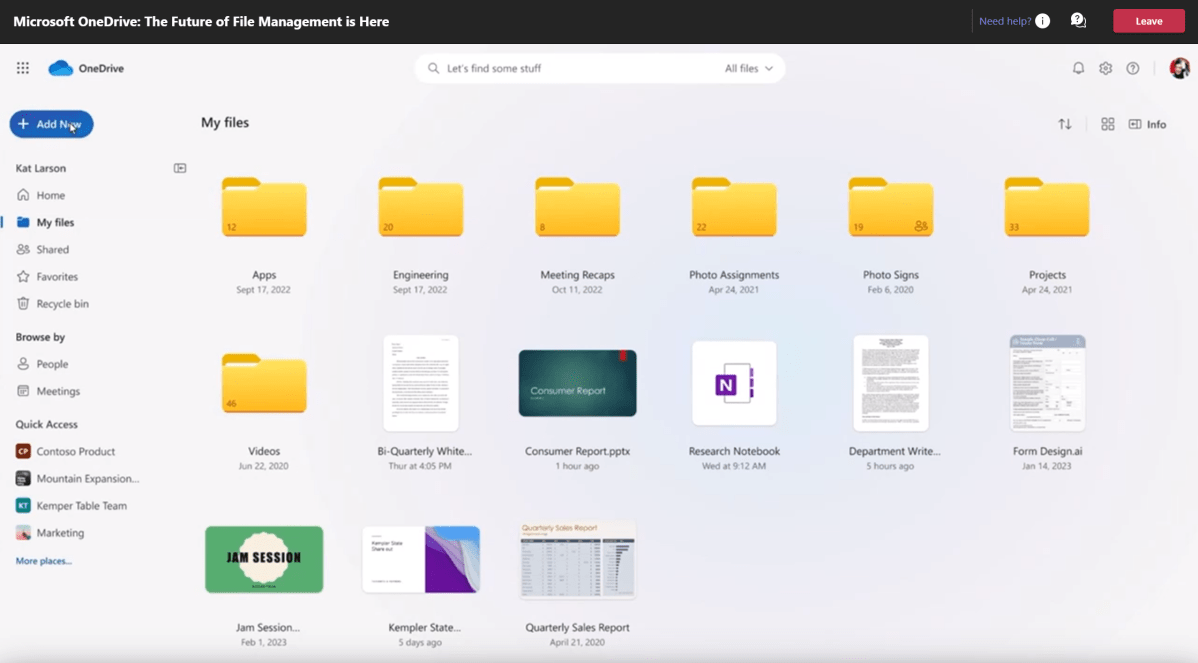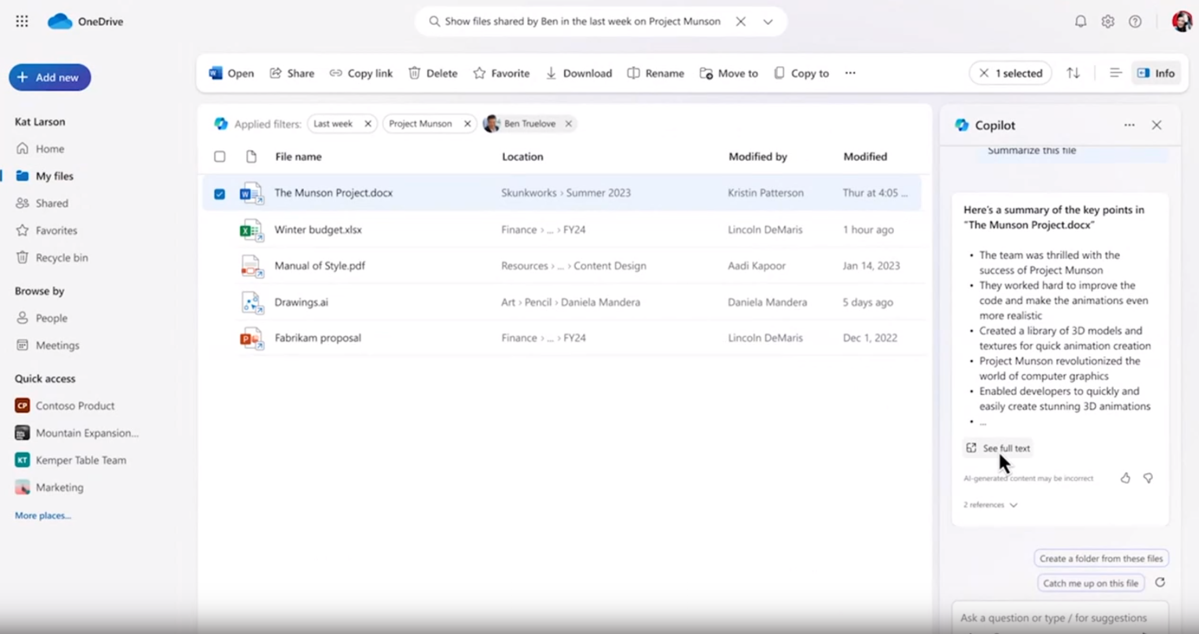OneDrive is investing in improved sharing and organizational features for business users, but consumers are being left behind: Microsoft will add media-centric search and AI capabilities, but that won’t occur until next year. That will include the ability to search photos through facial recognition, a feature Google debuted about seven years ago.
Microsoft executives referred to the updates as “OneDrive 3.0,” a salt shaker of granular features being added to Microsoft’s cloud storage. For now, the biggest changes are in organization: You’ll be able to search for OneDrive files in a people view, as Microsoft has tipped before. OneDrive is also using some of the recent Windows 11 22H2/23H2 updates to File Explorer as a model to place recommended files in a carousel view at the top of the OneDrive page.
Basically, OneDrive is adding a number of views, so files can be organized by who shared them, if they’re relevant to upcoming meetings, and so on. Those changes are available for business users, so if you log in to OneDrive.com with your business credentials you should see the new changes today.
Microsoft also outlined its roadmap for upcoming OneDrive features.
In December, OneDrive will more closely integrate with Word, Teams, Outlook, and more. You’ll start to see OneDrive appear in the left navigation bar of Teams and Outlook, for example, so you can jump right to the relative files.

Mark Hachman / IDG
In early 2024, Microsoft is adding offline access to the web version of OneDrive. Put another way, you’ll see Files on Demand (aka placeholders, which can make Windows 11’s restore and backup process worse) in your list of OneDrive files in the web app. The good news is that Microsoft is pairing this with an offline mode, so you’ll be able to open a local copy of the file on your PC, edit and make changes to it, and those changes will be quietly synced once you return online. By summer, Microsoft will let you create files (such as new Word documents) by launching them from OneDrive itself.
Unfortunately, you’ll also have to wait until mid-2024 to see the new “Media View” in OneDrive. This essentially makes any photos stored in OneDrive, such as your Camera Roll, equivalent to the Photos app on Windows 11 — you’ll see a list of photos as photos, in graphical view. According to Jason Moore, the vice-president in charge of product management for OneDrive, that will also include natural language search for OneDrive: Searching for “photos in the mountains with Katherine in the fall” will bring up relevant images.

Mark Hachman / IDG
That’s a bit more sophisticated than what rivals offer, though it still arrives years late. Google began offering to index photos by facial recognition in about 2016. Microsoft’s indexing may go beyond that, but it’s still years late.
Naturally, the future of OneDrive is Copilot integration: Being able to query OneDrive, textually, for files and summaries, and everything that Microsoft 365 Copilot could do. But executives said in the Q&A chat fields during the Teams 3.0 launch that they’re still working out how many files should be query-able by Copilot, and how large of a file could be accessed, summarized, and queried. Those questions will have to be tacked onto a bigger one: When will Microsoft roll out Copilot for OneDrive? That’s the big one, and one Microsoft declined to answer.




